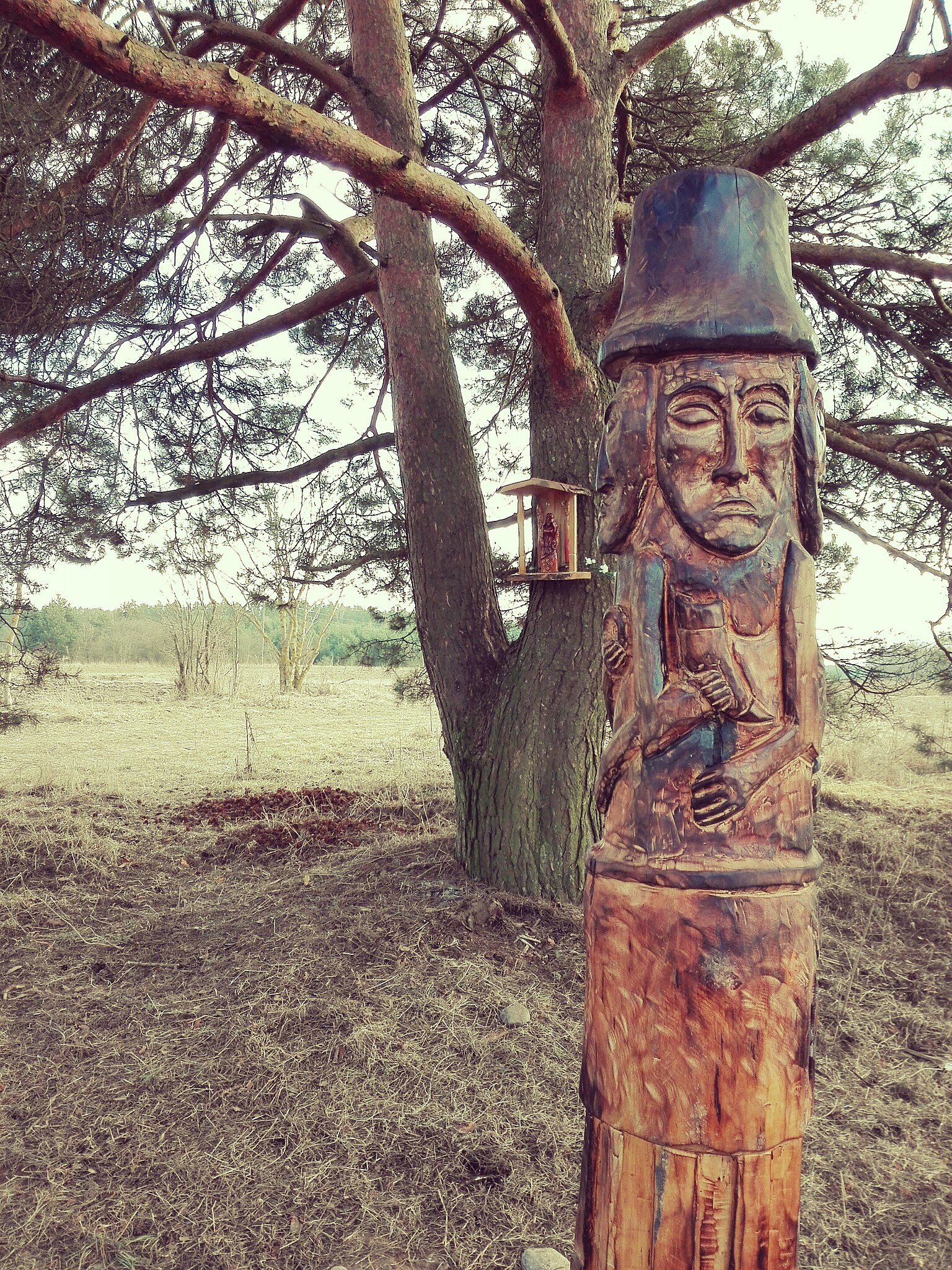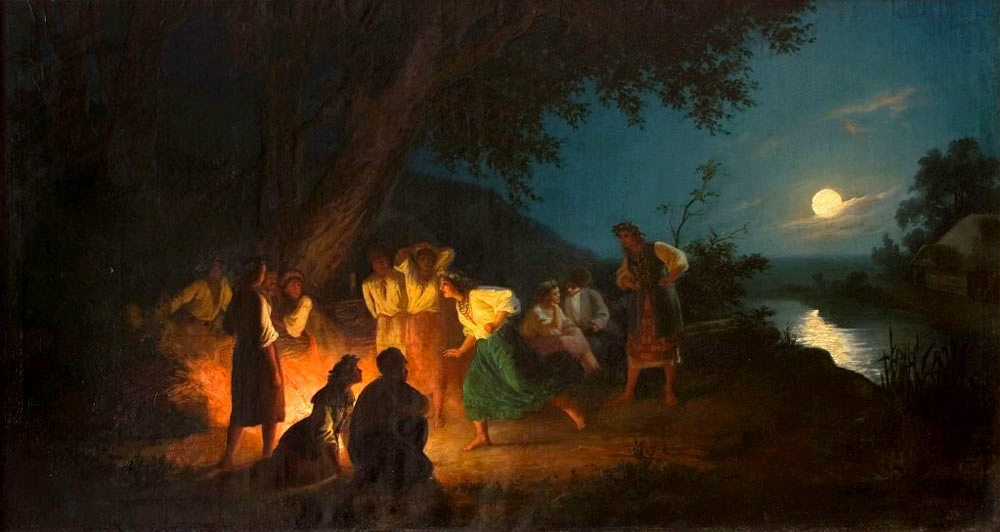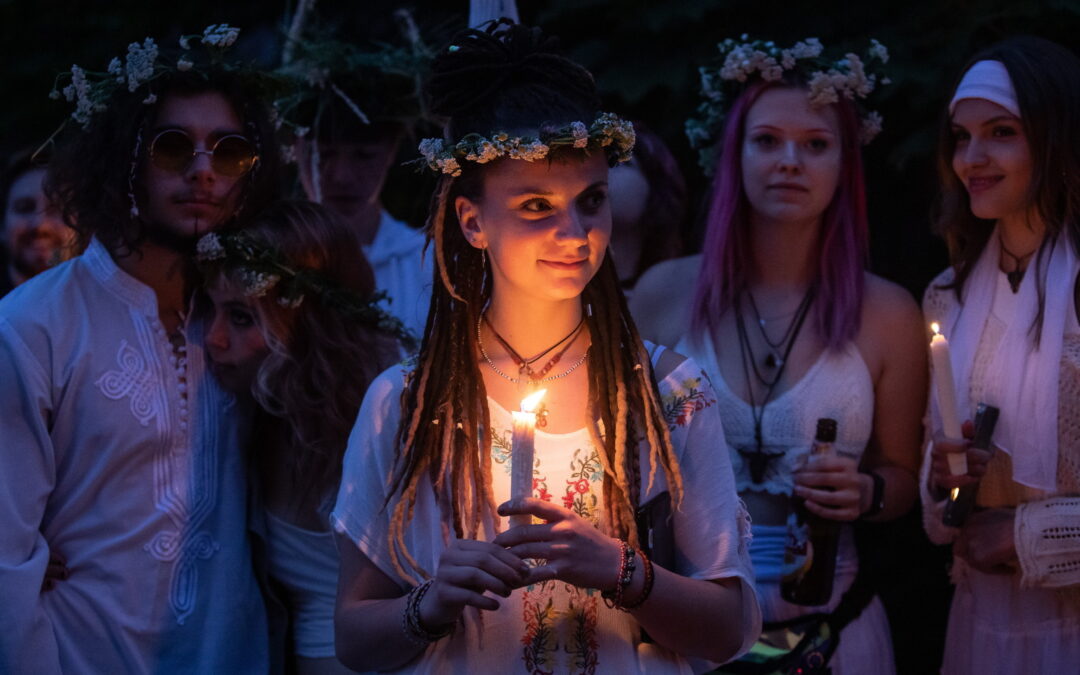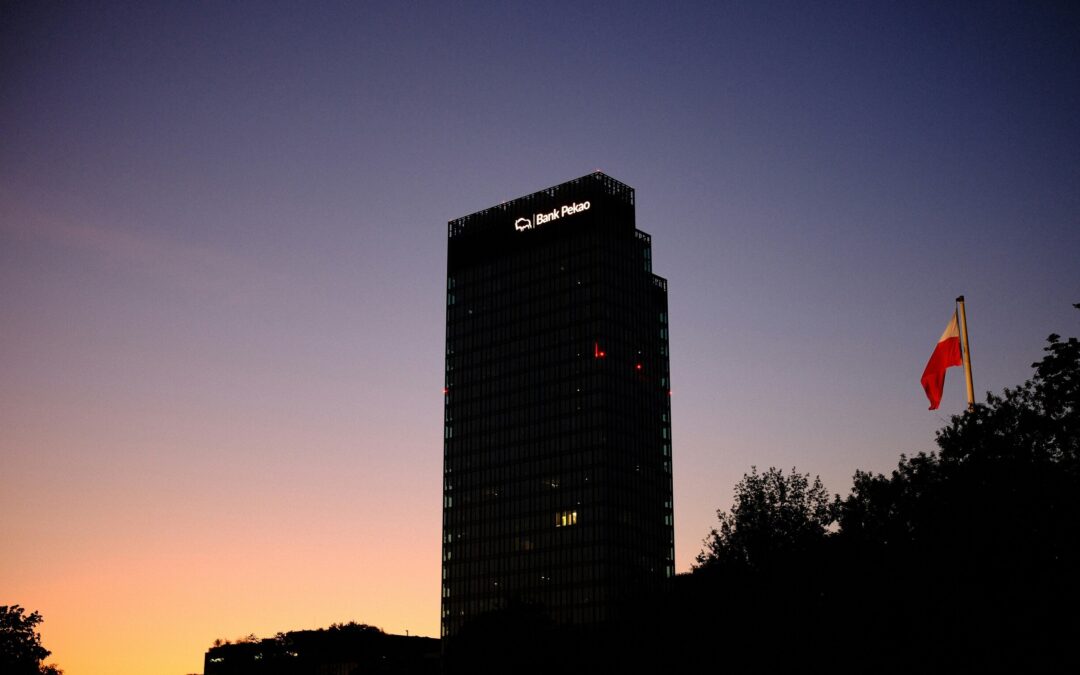By Katarzyna Skiba
While traces of Poland’s pre-Christian, pagan belief system are embedded in Polish culture and traditions, practice of the faith itself largely disappeared in the centuries following the country’s adoption of Christianity. However, a small but growing number of Poles are now reviving such ancient beliefs in a modern pagan religion known as Rodzimowierstwo – Native Faith.
Just as other religions have denominations or branches, so too exist different groups of believers within Native Faith. In order to be officially recognised, such groups must register as a religious organisation with the interior ministry in Poland.
This provides members with various legal rights, including to request days off work for religious holidays and for their children to be taught their beliefs during religion classes offered in schools. It also enables the state statistical agency (GUS) to collect data about the organisation.
According to the latest GUS report about religious denominations, published in 2022, there are four Native Faith organisations in Poland, with a total of between 3,300 and 3,400 members. The largest – the Native Church of Poland (RKP) – has been growing year-on-year since 2011 and has 2,723 members as of 2021.
Additionally, at the end of January a new Native Faith organisation – the Religious Association of Polish Native Believers “Ród” – was registered with the interior ministry.
Związek Wyznaniowy Rodzimowierców Polskich RÓD-Po siedmiu latach od powołania Związku Wyznaniowego Rodzimowierców Polskich Ród , po pięciu latach od złożenia dokumentów Departamentu Wyznań Religijnych oraz Mniejszości Narodowych i Etnicznych MSWiA udało się! 26.01.2024 r -nr 192 pic.twitter.com/kLIn10KaYj
— Leszek Owsiany (@OwsianyLeszekT) February 2, 2024
Native Faith is thus a small but growing religion, although it is difficult to estimate its true size as not all of its followers – Rodzimowiercy in Polish – belong to registered organisations.
The faith has survived multiple turns of history, from the original Christianisation of Poland in 966, to the arrest of faith leaders during the Stalinist period, to the vandalism of a religious monument in the present day.
What is Native Faith?
Native Faith is a polytheistic religion emphasising connection with several deities, as well as with one’s ancestors and with nature. Its followers view it as a continuation of the religious beliefs and ritual practices of Slavs living in pre-Christian Poland.
“Its main foundations are based on respecting and living in harmony with the nature around us, derived from traditions passed down over generations,” says Ratomir Wilkowski, a representative of the RKP council and a żerca – a Native Faith priest.
According to their tradition, the fate of the world is determined by the supreme god, a cosmic force surrounding the universe. In the RKP, this god is referred to as Świętowit, but other names are used among different Native Faith organisations. Rather than being defined by a good-evil dichotomy, Świętowit is believed to transcend what Rodzimowiercy view as subjective, man-made criteria.

A wooden sculpture of a Światowid in Gajowniki. Photo credit: Radzik Meriath/Wikimedia Commons (under CC BY-SA 4.0)
Followers also believe in a pantheon of several other deities, who derive from the supreme god’s unifying force and can serve as patrons of specific elements, places or phenomena. These include Mokosz, a mother goddess associated with women’s destiny and fertility, and Swaróg, the god of fire, the sky and the sun.
At the end of the 10th century, Poland entered a period of Christianisation and political transition, characterised as “a time of turbulence, strife, and bloodletting” by historian Anita Prazmowska in her A History of Poland.
At least one pagan uprising against the Roman Catholic church took place in the 1030s, destabilising the church and the country. The Northern Crusades of the 12th century saw the violent suppression of pagan religion, both in Poland and the wider Baltic region.
Or, as the RKP puts it, this was a period in which the church “tried to brutally destroy everything that was connected with the spiritual world of our ancestors”.
"Poles form identity in a different way. Geographically, we will always be fighting a losing battle. Poland lies nowhere, it is a universal idea."
Daria Chibner reflects on the work of renowned Polish literary scholar Maria Janion, who died last month https://t.co/B0j69prXYR
— Notes from Poland 🇵🇱 (@notesfrompoland) September 5, 2020
A process of reconstruction began alongside the folk revival of the Romantic Era in the 19th century. Eventually, in the interwar period, the first modern Native Faith organisations began to appear in Poland, but their leaders were arrested amid the Stalinist repression of the postwar communist period.
What now constitutes Native Faith began in the 1990s, when organisations such as the RKP and the Polish Slavic Church (PKS) were founded, bringing the faith into the modern day and slowly gaining a larger following.
Native Faith today
Centuries of Christianity being the dominant religion mean that modern paganism is a “kind of act of reconstruction”, says Scott Simpson, a lecturer at the Jagiellonian University who specialises in ritual studies and contemporary paganism in Central and Eastern Europe. “Some bits and pieces of tradition are damaged, fragmentary or completely lost.”
However, followers of the faith emphasise that they are not reenacting history or resurrecting a “dead” mythology.
“Slavic Native Faith – as a living, contemporary faith – is not so much about returning to an earlier, pre-Christian culture, but about its continuation, maintenance, development and popularisation,” says Wilkowski.
I very much like the “Jare Gody” tradition, that is still very much alive and celebrated in Poland, and is Slavic Pagan (rodnovery.)
Burning the effigy, hitting it with sticks, and throw it in the water, to welcome spring. pic.twitter.com/yB3c3eujxC
— Brian Nijman (@BrianNijman) March 29, 2024
This means that what cannot be reconstructed from 10th-century chronicles or academic sources is instead developed from choices made by Rodzimowiercy and from “sincere religious inspiration”, explains Simpson.
Culture and identity are also vital to Native Faith. “The basis of all this is Slavicness, this culture, this common core that connects us all,” says Szymon Bronimir Gilis, a żerca from the new organisation Ród and a member of its management body, the Elders.
Religious celebrations follow the cycles of nature, including solstices and equinoxes, each of which marks a holiday. Among these is Noc Kupały (Kupala Night) – the summer solstice – which celebrates love, fertility, the sun and the moon.
During Kupala Night, Rodzimowiercy jump over bonfires to cleanse and protect themselves from evil and participate in mass bathing in nearby bodies of water. Other rituals include singing and the wearing of wreaths made from wildflowers and herbs.

Night on the Eve of Ivan Kupala by Henryk Siemiradzki, ca. 1880 (Lviv National Art Gallery/public domain)
While Native Faith does have leaders, the collective contribution to worship is a key part of its religious practice.
“One of the central elements of a ritual is the passing around of a horn of alcohol alongside toasts. Each person throws in some little piece of theology, and the group praises it as acceptable and good,” says Simpson. “It’s almost the opposite of an authority telling you what you should believe.”
Paganism and Polish identity
For many in Poland, the Roman Catholic faith has become synonymous with the country’s culture and identity. Even though religious participation is in steep decline, the most recent census data show that 71% of Poles still identify as Roman Catholics.
“There is a very strong sense in Roman Catholicism today in Poland that it is the storehouse of Polish values, and you hear politicians saying that,” says Simpson. Yet “there were things before Roman Catholicism arrived, and there are things today that can sincerely be called Polish values and aren’t Roman Catholic”, such as folk customs and traditions.
A growing number of Poles are turning away from the Catholic church, but not from religious belief itself.
This creates challenges for the church, but also for Polish identity, which has historically been linked to Catholicism, writes Katarzyna Skiba https://t.co/udWGzd0X7F
— Notes from Poland 🇵🇱 (@notesfrompoland) April 18, 2023
Although numbers of Rodzimowiercy are growing, both experts and practitioners say that many Poles are not aware of the existence of such communities and what they believe in.
“I don’t know if society is even that aware that there is such a thing as modern paganism,” suggests Joanna Malita Król of the Institute of Religious Studies at the Jagiellonian University.
“Even the terms paganism or neopaganism carry with them the feeling of ‘otherness’, because they came about among Christians seeking to name those other people around them,” explains Mariusz Filip, an anthropologist at the Adam Mickiewicz University in Poznań.
Contemporary struggles
While Rodzimowiercy do not face widespread discrimination, their faith is not always welcomed by others in Poland.
In 2009 in the village Babia Góra, a wooden sculpture of a Światowid was vandalised with a saw, and attempts were made to forcibly pull it from the ground. The symbol – a four-sided pillar whose name means “worldseer” – is of similar significance to Rodzimowiercy as the cross is to Christians.
In 2017, a city council member in nearby Choroszcz submitted an official motion to remove the Światowid. Not long after, it disappeared from Babia Góra, which led a few dozen Rodzimowiercy to protest.
“If someone had committed a similar act against a Christian cross or a chapel, there would have been an immediate uproar and the police would have automatically initiated an investigation,” said Wilkowski in a speech during the protest.
A small community in Poland is embroiled in a dispute over 13 wooden sculptures of mythological spirits, pitting Catholics warning of "demonic idolatry" against officials seeking to promote tourism and local Kashubian folklore https://t.co/clhmpSAZCe
— Notes from Poland 🇵🇱 (@notesfrompoland) February 21, 2020
Rodzimowiercy can also be stereotyped as political extremists, owing to their faith’s emphasis on Slavicness and nativeness, and the appropriation of pagan symbols by the far-right.
In reality, Native Faith “is an internally diverse movement, where you can find a whole range of political views”, suggests Filip, whose research specialises in right-wing extremism among Rodzimowiercy.
“Some people think that I’m going to start casting spells on them,” says Marcin Józefaciuk, the first Polish MP to identify as a modern pagan, although he acknowledges that this happens “less and less often”.
Spurred by the recent registration of the Ród organisation, members of the faith have made it their goal to promote a wider understanding of who they are.
“This registration does not mean that our work stops here”, wrote representatives from Ród in a post on Facebook. “Instead, it is a signal that we need to roll up our sleeves and intensify our work for the revival of the native Slavic faith in Poland”.

Notes from Poland is run by a small editorial team and published by an independent, non-profit foundation that is funded through donations from our readers. We cannot do what we do without your support.
Main image credit: Jakub Wlodek / Agencja Wyborcza.pl




















